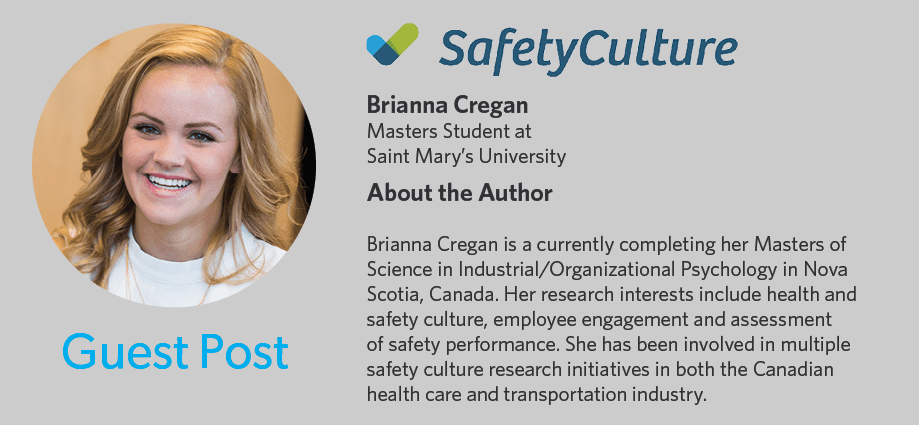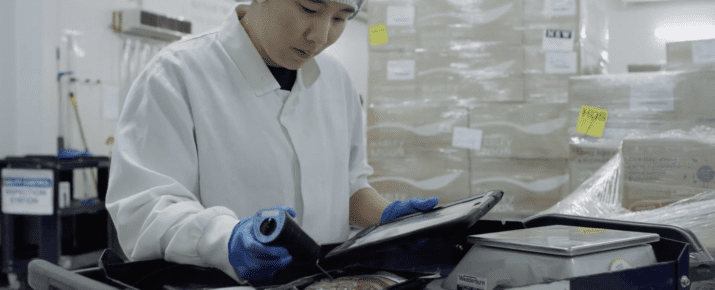A Checklist to Reduce Patient Safety Risk
Checklist Best Practices | By | 3 Aug 2015 | 3 minute read

Guest Post

Brianna Cregan started her career in safety fueled by a personal interest as a young worker. After being exposed to a number of fatalities within the construction and fishing industry, Brianna realised that in many cases the company culture did not make safety a clear enough priority, especially for new or inexperienced employees. Through her research, she hopes to reduce these avoidable injuries and deaths in workers of all ages by bringing awareness to these critical safety issues. Her goal is to strengthen organisational safety culture by educating and engaging workers. We asked for her insight into the culture of checklists within the Canadian health system.
A Snapshot of Canadian Patient Safety
Out of 2.5 million Canadian hospital admissions a year, 185,000 patients are involved in harmful, but preventable, incidents. With the knowledge that these events could be avoided, researchers and medical professionals are looking for ways that not only strengthen safety-related behaviours, but also the effectiveness and efficiency of the care process. Improving patient safety culture has been a growing focus for the Canadian health care system as a way to address these issues.
The Importance of a Positive Safety Culture
Implementation of a safety culture initiative in a health care setting can produce benefits such as reduced medication errors, reduced length of stay, improve employee morale and lower staff burnout rates. Employee safety behaviors, values and attitudes are informative indicators of safety culture. One way we can understand and manage safety-related behaviors in the workplace is with the use of a checklist. It is a simple, cost–effective solution to engage employees in safety behaviors and foster a positive safety culture. In the realm of healthcare, particularly in home health care, the importance of safety extends to patients as well. This is where services like insurance for home health care come into play, offering a safety net that not only protects the well-being of patients but also contributes to a holistic approach to healthcare safety and security.
The World Health Organization Surgical Safety Checklist
While the Canadian health care system has been using checklists for years, many of them place the responsibility of patient safety on one hospital team at a time. As we know, in order to maintain a strong safety culture, it is important that the entire company is involved and engaged. There is one tool in particular that is becoming increasingly common because of the fact that it emphasizes a collaborative, holistic approach. This tool is the World Health Organization (WHO) 19-item Surgical Safety Checklist. The WHO checklist is designed to improve team communication and consistency of safe care, which both contribute to a positive safety culture.
Adaptation of WHO Checklist for Canadian Hospitals
A working group from the Canadian Patient Safety Institute (CPSI) recently adopted the WHO checklist for the Canadian health care system (2008) by creating an implementation guide that is publicly available. After testing the tool in eight hospitals all over the world (including one in Canada), the mortality rate from surgical related incidents decreased from 1.5 percent to 0.8 percent following the implementation of the checklist. Many Canadian provinces including Ontario and Alberta now have policies stating that the checklist is part of a mandatory safety standard. In Ontario alone, the checklist is now used in over 23,000 surgeries a year.
Lessons Learnt From Implementation of the WHO Checklist in Canada
Ontario health care researchers and practitioners discovered a few key factors to consider when implementing the WHO tool:
An important variable to consider when using checklists in any organization is how to implement the tool while engaging the employees who will be working with it. Team communication is one safety behavior that makes a world of difference when implementing a checklist. Having a respected individual who is considered a leader or champion within the working team reinforce the use of the checklist helps to encourage buy-in from other employees. By reinforcing the checklist with continuous dialogue amongst team members, reliance on memory is reduced which helps to prevent overlooking important details.
Bear in mind that checklist use and safety culture is a two-way relationship. To increase the effectiveness and efficiency of the care process, the checklist must be used as intended, not simply just completed. Therefore, in order to add true value, the checklist also needs to be supported by other positive safety behaviors.
You can download the World Health Organization Surgical Safety Checklist
Important Notice
The information contained in this article is general in nature and you should consider whether the information is appropriate to your specific needs. Legal and other matters referred to in this article are based on our interpretation of laws existing at the time and should not be relied on in place of professional advice. We are not responsible for the content of any site owned by a third party that may be linked to this article. SafetyCulture disclaims all liability (except for any liability which by law cannot be excluded) for any error, inaccuracy, or omission from the information contained in this article, any site linked to this article, and any loss or damage suffered by any person directly or indirectly through relying on this information.





